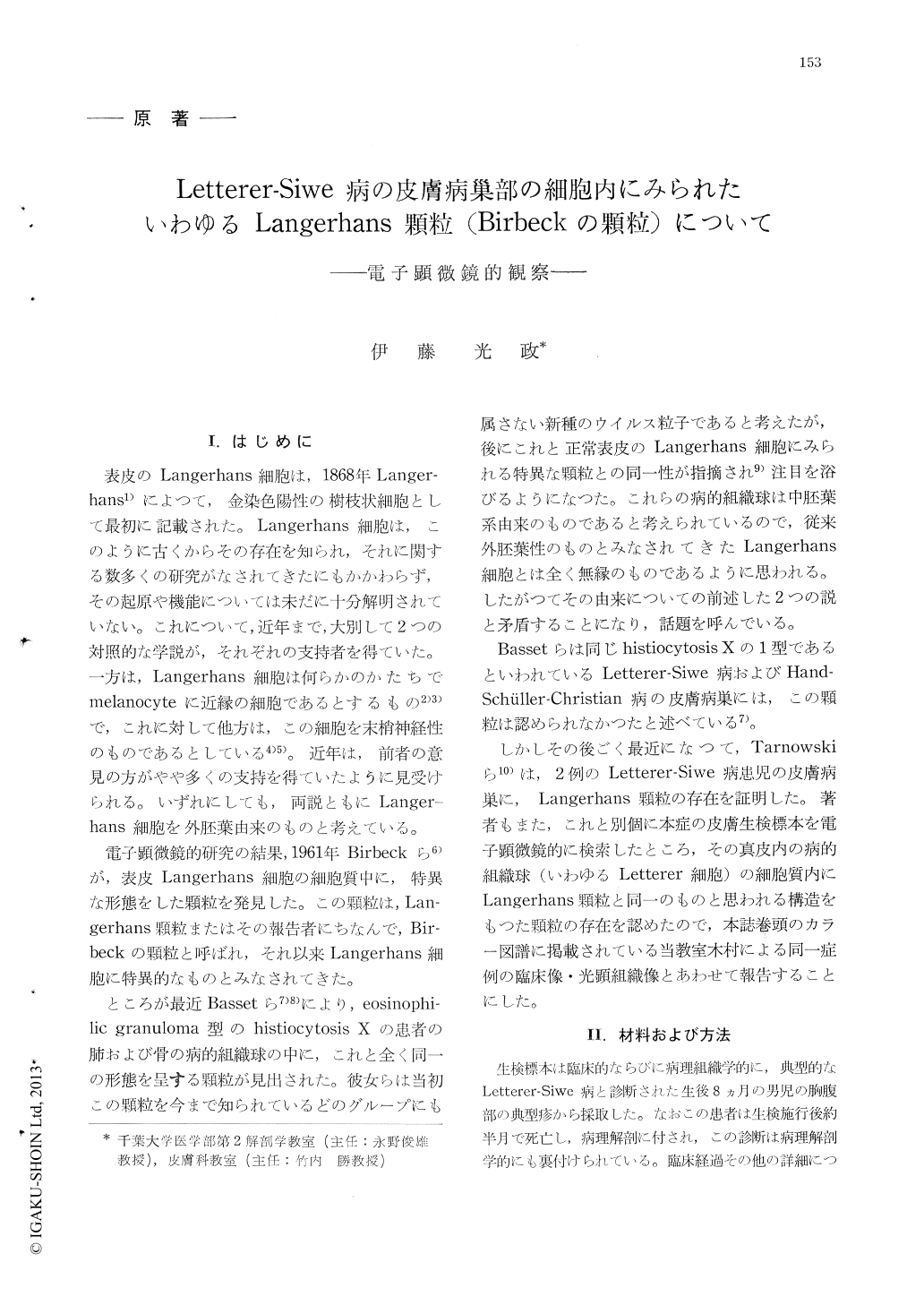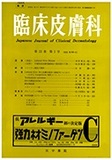Japanese
English
- 有料閲覧
- Abstract 文献概要
- 1ページ目 Look Inside
I.はじめに
表皮のLangerhans細胞は,1868年Langer-hans1)によつて,金染色陽性の樹枝状細胞として最初に記載された。Langerhans細胞は,このように古くからその存在を知られ,それに関する数多くの研究がなされてきたにもかかわらず,その起原や機能については未だに十分解明されていない。これについて,近年まで,大別して2つの対照的な学説が,それぞれの支持者を得ていた。一方は,Langerhans細胞は何らかのかたちでmelanocyteに近縁の細胞であるとするもの2)3)で,これに対して他方は,この細胞を末梢神経性のものであるとしている4)5)。近年は,前者の意見の方がやや多くの支持を得ていたように見受けられる。いずれにしても,両説ともにLanger-hans細胞を外胚葉由来のものと考えている。
電子顕微鏡的研究の結果,1961年Birbeckら6)が,表皮Langerhans細胞の細胞質中に,特異な形態をした顆粒を発見した。この顆粒は,Lan-gerhans顆粒またはその報告者にちなんで,Bir-beckの顆粒と呼ばれ,それ以来Langerhans細胞に特異的なものとみなされてきた。
Langerhans granules, which had been regarded as specific for Langerhans cell of the normal epidermis, were found in the pathologic histiocyte of Letterer-Siwe's disease.
This disease should belong to histiocytosis X as well as eosinophilic granuloma and Hand-Schüller-Christian's disease. They might be different expression of the same entity.
As for the origin of Langerhans cell there is a possibility of histiocyte theory, as well as melanocyte theory or peripheral nerve theory.
There are two theories of origin of Langerhans granule-) A theory that it is produced at the Golgi apparatus and excreted or (2) A theory that it is formed at the cell membrane and phagocytized into the cytoplasm. It could not be concluded from this study that which theory might be more probable.

Copyright © 1969, Igaku-Shoin Ltd. All rights reserved.


